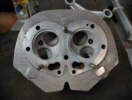- Joined
- Nov 13, 2023
- Messages
- 55
Hi guys, I am a diy when possible. and this forum has been really great to help be in my journey to bring my 71 750 commando back to life. I'm pulling the head off and got a quote from a local machine shop in Canada for $480.00 ($283 pounds for the uk) plus taxes and parts and using k/b valve guides bronze only. Is this reasonable? I was also contemplating doing the heating/freeze diy method as mentioned in the forum. I used to work in a machine shop 30 years ago, still got my micrometer, calipers etc. I plan on just riding this bike on occasion, no racing etc. I have been trying to read the forums but lots of differing opinions.
I could also save that money and buy the tools needed. This is probably like another what oil you use type of thread, I apologize.
I could also save that money and buy the tools needed. This is probably like another what oil you use type of thread, I apologize.

